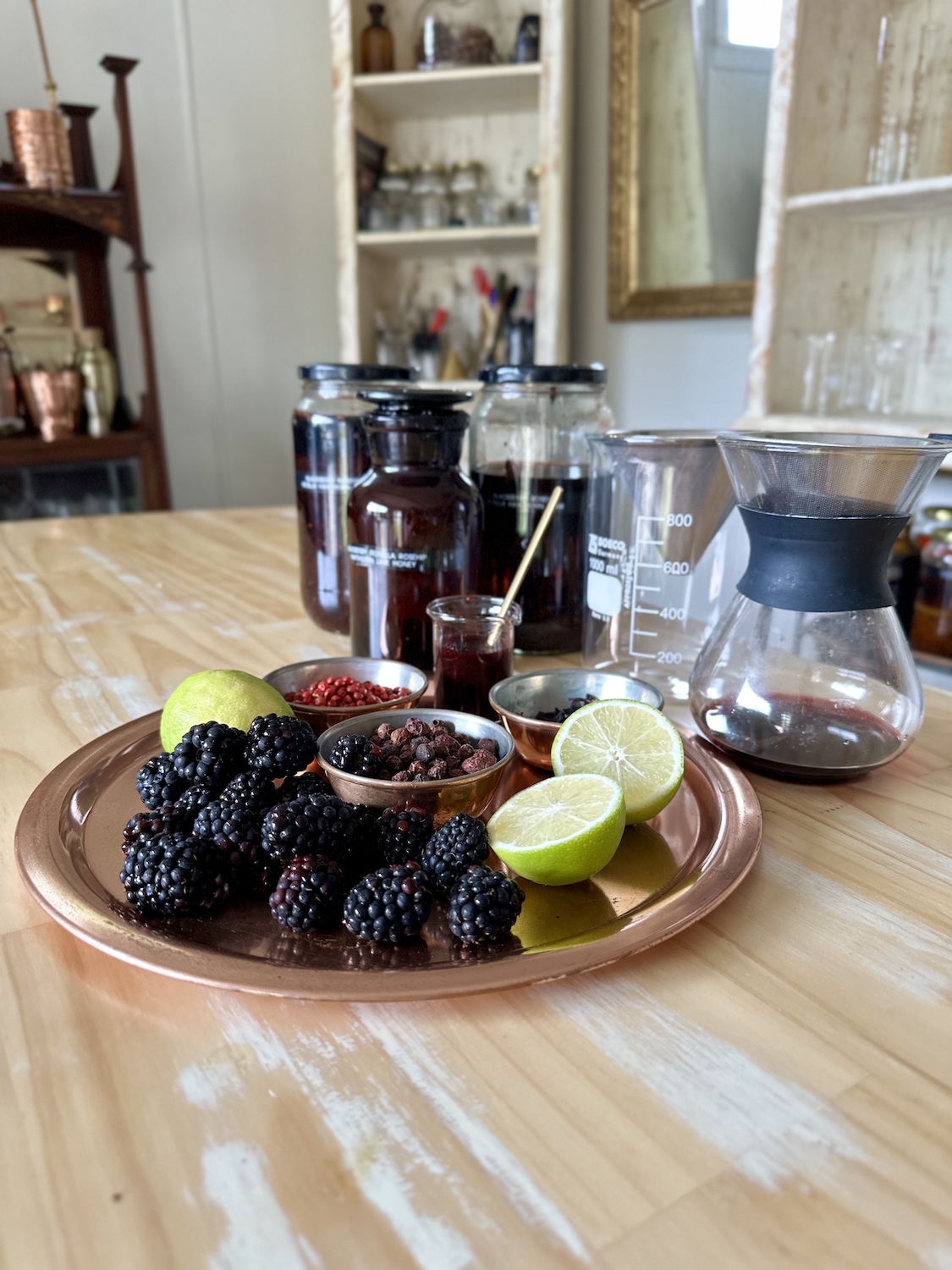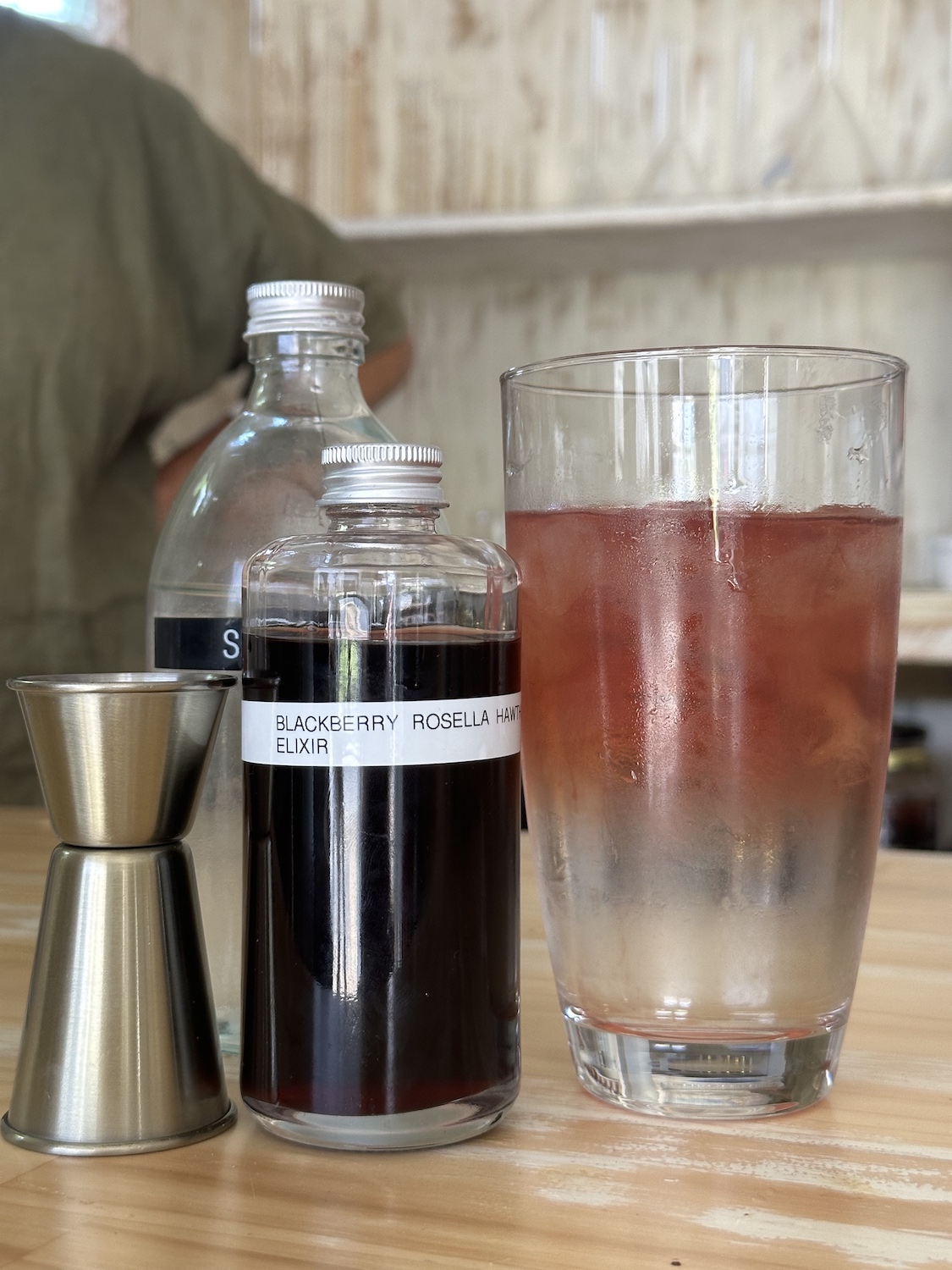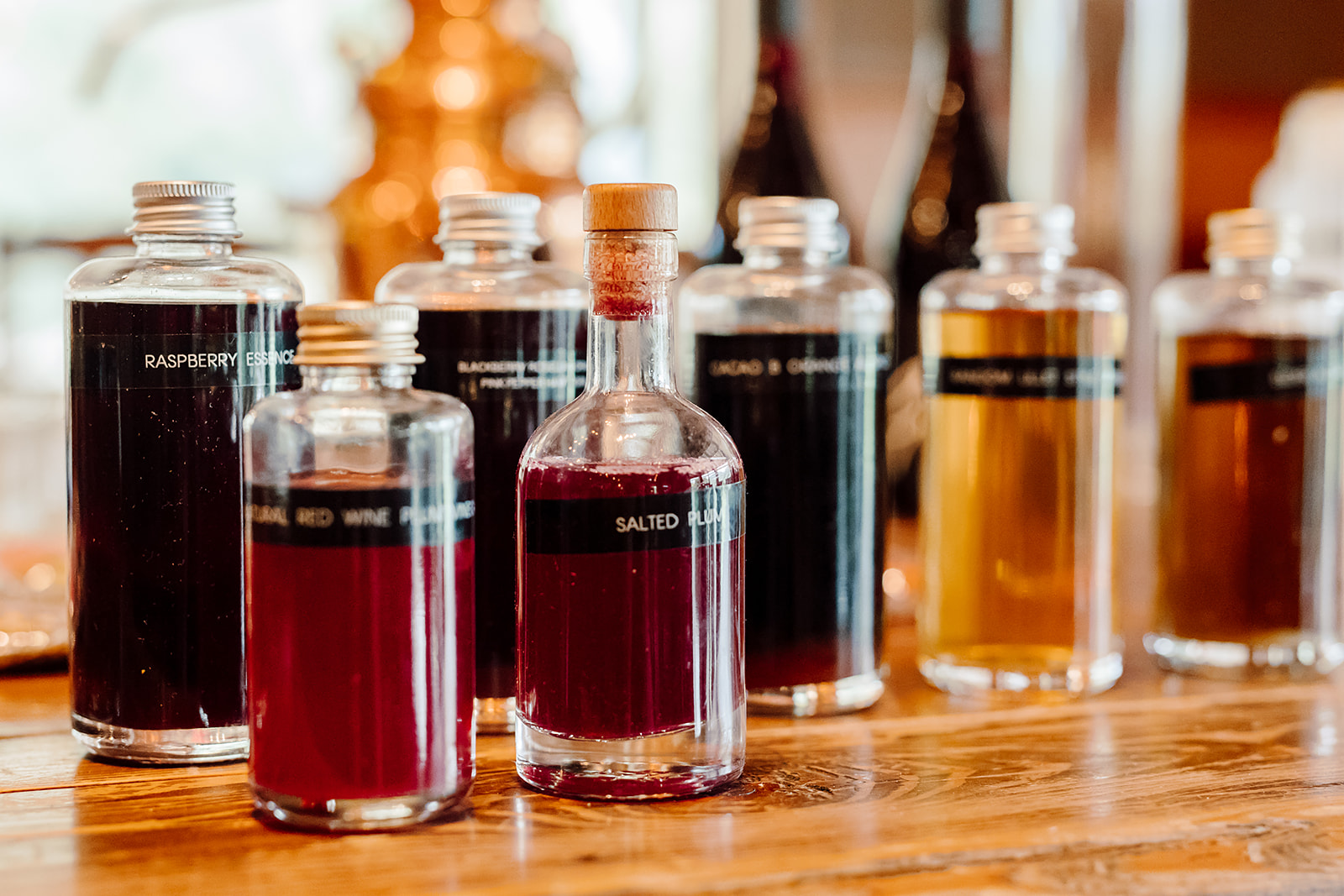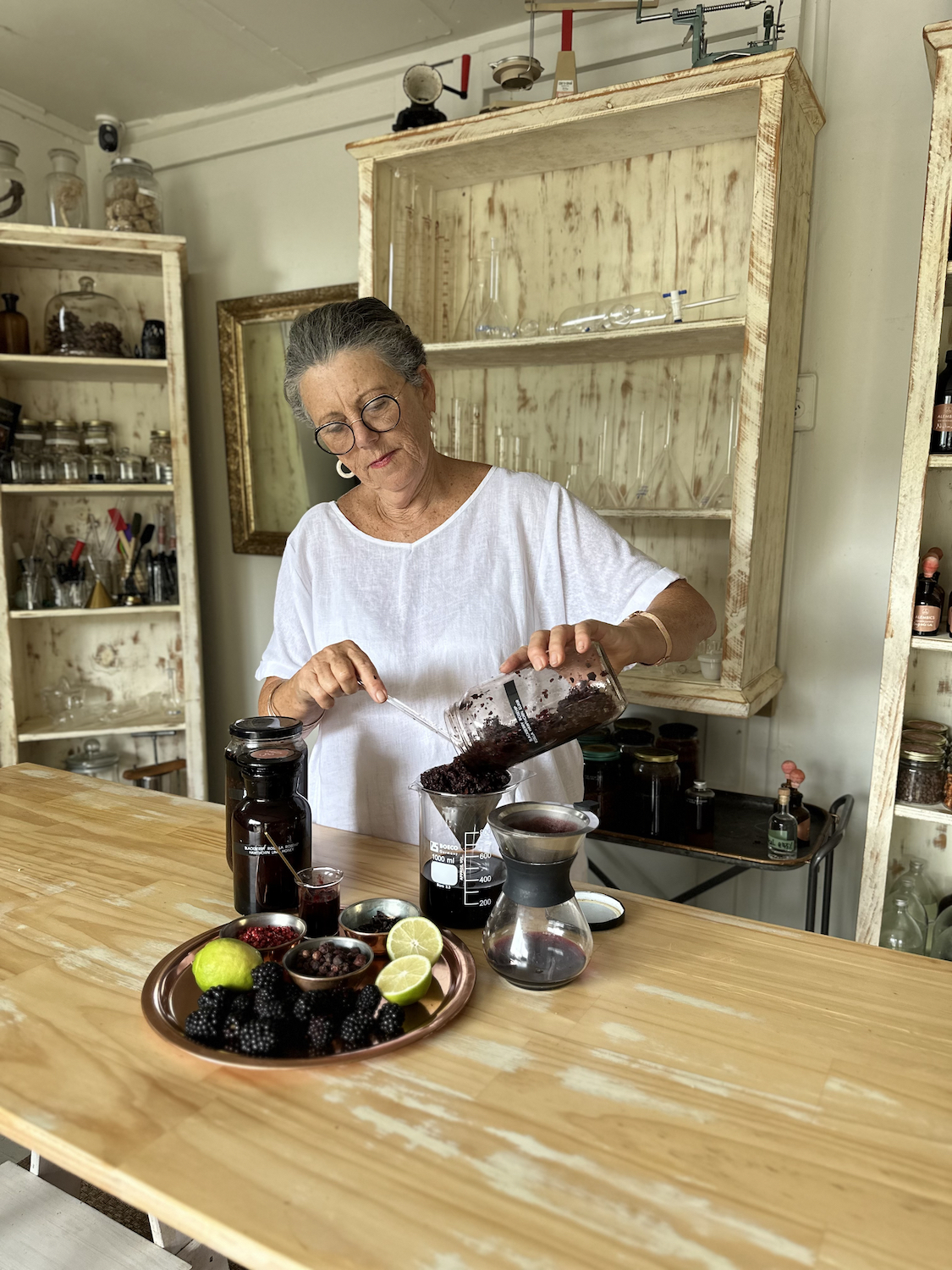Our new favourite flavours
Jill Mulvaney tells us about her latest aromatic product—honey elixirs—and why she’s now teaching them in all her workshops.
We have been doing a lot of work with elixirs in The Lab, and they have been generating a lot of excitement (and curiosity) from everyone we share them with. This is a new concept that we have started bringing into our workshops recently, and one that we have become particularly passionate about.
The process of making honey elixirs has several steps, so you can see why it’s something that I love taking people through at workshops. The process also creates several different (and delicious) products—a herbal honey, an elixir and sweet treats like chocolate centres, frooze balls or even granita from the marc. This is deeply satisfying for me, as it gives us the opportunity to utilise everything we produce, minimising waste in a process akin to nose-to-tail eating.
Honey elixirs begin with the creation of herbal infused honey. On my last trip to the US I was able to fit in a medicine making course with Lisa Ganora—the author of Herbal Constituents—who has been teaching phytochemistry for herbalists and health care practitioners for more than 20 years. She practises western clinical herbalism in the Vitalist tradition and is based at Elderberry Farm Herbal Education and Retreat Centre in Colorado.
I’ve taken her methods and adjusted it to create delicious herbal infused honeys and elixirs using a combination of fruits and aromatic botanicals. They are primarily about deliciousness and flavour, but as you will see they are also all about goodness and health.
Honey’s chemistry (including its supersaturated and hygroscopic natures) makes it another useful solvent for extracting colour (antioxidants) flavour and aroma, and the solution has the sweet character of honey, which makes it so delicious.
One of my current favourite recipes is for a honey infused with blackberries, lime, pink peppercorns, hawthorn and hibiscus flower. The herbal honey is a delight— a balance of sweet, sour and perfumed—with a zingy bite from the pink peppercorns. And it’s a deep, rich red from all the anthocyanins.
Once I have filtered my herbal honeys, all that rich goodness left behind becomes the base of our elixir. One taste and you know there is so much more to be extracted, so we get alcohol to do the rest of our work. We cover this with neutral spirit and leave it to steep, and not long after we have our elixir. They’re delicious on their own as an aperitif or digestif, and add layers of flavour and complexity when added to cocktails. We’re only really beginning to explore their uses.
If you would like to know more about making and using herbal honeys and elixirs, we’re now including them in all our in-person workshops. I always try to bring along a selection of elixirs with me for people to try, so come along to experiment and enjoy.
Hit the play button in the video below for a quick look at that delicious blackberry herbal honey. (And a quick clarification in this video: Hibiscus flower is commonly known as rosella, but it’s scientific name is Hibiscus sabdariffa—soon to be added to our Encyclopedia Botanica).
